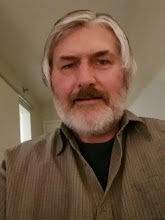One of the first things I learned about story telling is that you must take your hero or protagonist (yes, they are different things) and put them into terrible trouble. The rest of the story is devoted to getting he or she out of that trouble. Want a story to succeed? Begin by dropping your main character into the frying pan. You'll never have to worry about hooking your reader.
Do you know how many want-to-be writers there are who don't understand the function of plot and theme? Worse yet, many reviewers fall into the same category.
Plot is the rack you hang your story on; it's the logical structure you must build into a story in order to communicate effectively with your reader. You learned in school everything must have a beginning, a middle and an end. OK, this is true. But think of it in terms of a skeleton: each piece must smoothly connect to the next in order for the creature in question to be mobile. Failing to plot is to plot to fail!
Theme. This is perhaps the most difficult aspect of writing. Theme is your message, what the story is about, what it means. Thanks to inept critics, many authors shy away from consciously creating a message in their fiction. The critics are famous for saying "Fiction with a message is bad fiction." What nonsense! Every story has a message. We use language to lend meaning to our experiences; how can a story not have meaning?
Let's take my novel, The Sorcerer's Key as an example of what I've been talking about.
As the story opens, Jack Lightfoot, the protagonist (he's a lead character, not a hero), is suddenly plunged into a 20 year-old power struggle between his father and the very nasty Morgan Heist. The plot is two-fold... First, we have the progression of the power struggle. Second, the reader witnesses the unfolding of an alternate history of The Fall of Man. There are two skeletons to unearth in this book.
And, finally, we come to the theme. It may seem to be apparent on first read (at least one foolish critic thought so), but it is not. Careful thought will bring the reader to the understanding that this is a story dedicated to showing how life never turns out as we expect; it is a malleable and unknowable set of ever-changing, intermixed events. This meaning was purposefully inserted.
There is no need for beginning, middle (exposition) and end in this kind of writing. The problem or item of discussion is introduced, the author attempts to solve the problem or explain the topic, and he or she reveals that solution or summary. It's a logical progression; the construction of a clear beginning, middle and end is inherent to the process. The author's true effort lies in the mechanics of writing, the grammar and such.
Not so complicated, is it?
copyright © Clayton Clifford Bye 2009
For more of Clayton Bye's writing, visit his website or become a fan.
Thursday, June 11, 2009
Subscribe to:
Post Comments (Atom)




No comments:
Post a Comment